For the small shop or home garage, there’s never enough room. The 4WD Mechanix workshop and studio is no exception. When it comes to common challenges, MYCHANIC® has solutions.
MYCHANIC® offers innovative tools and equipment for serious ‘DIY’ enthusiasts and automotive shop techs working at the ground level. Tool and parts organization can be stifling. Grasping for tools can be time consuming, they’re often just out of reach. Without a hoist or ready access to the shop’s floor, keeping tools and parts in one place can be daunting. MYCHANIC® understands these shop and home garage challenges.
Tired of crawling on all fours or constantly sliding off your creeper to gather up tools and hardware? Consider these innovative MYCHANIC® tool and equipment solutions!
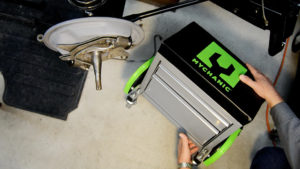
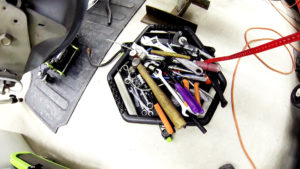
The Sidekick Stool with tool drawers keeps you upright, seated comfortably and within reach of your stowed tools, hardware and smaller parts. If you need more space or have to scoot beneath a vehicle, the Tool Creeper with pod light is just the fix!
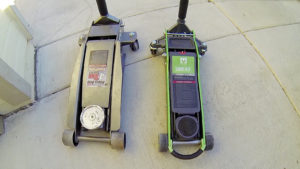
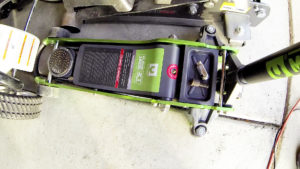
For our Ram 3500 4×4 with a Cummins diesel engine, the 4-ton silver jack makes sense. However, our XJ Cherokee or a CJ, YJ or TJ Jeep 4×4 is well within the lift capacity of the compact MYCHANIC® 2T Hybrid Jack! The maneuverability of the MYCHANIC® jack is exceptional, and it offers safe lifting capacity to 2-tons.
Caution: Always use a set of rated jack stands to support the vehicle when you plan to work beneath it. Never rely solely upon a floor jack when crawling beneath a raised vehicle. Keep hands and feet out of harm’s way while changing or rotating tires.
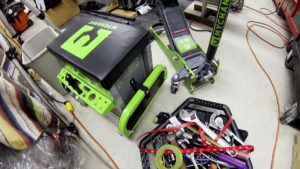
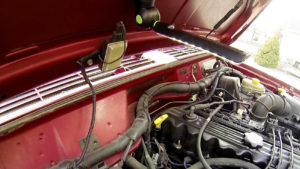
The practical trio of MYCHANIC® tools include the Sidekick Stool, Tool Creeper and 2T Hybrid Jack. For our shop’s mechanical work and filming chores, these niche tools prove very helpful. The Tool Creeper pod light and additional lighting from the rechargeable Blade Multi-Light make for a safer, well lit work environment! Producing a bright 250 Lumens of LED coverage, the Blade is flexible and handy. Both the Pod Light and Blade feature magnet mounting. The Blade’s red safety warning lights and easy stowage makes it a must item for your toolbox, center console or off-pavement spare parts box!
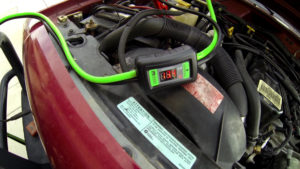
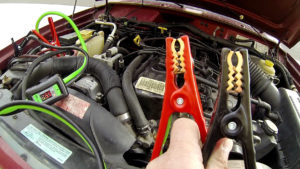
The Smart Booster Cables feature a very smart built-in volt meter. This is for measuring the voltage of the discharged/dead battery. The cables and meter can double as a troubleshooting tool, providing a voltage reading with the engine running to confirm alternator charge functions. These cables are flexible and resistant to very cold weather. Clamps are well designed and grip nicely!
Follow all of the manufacturer’s recommendations and safety warnings when using battery jumper cables. Cranking over an engine involves high amperage draw. Winches, especially when pulling a load, have a high amperage draw. There are wire and cable limits, and lighter gauge cabling is often not enough for heavy starter loads. Also, resistance increases over distance, and jumper cables are typically much longer than the vehicle’s battery and starter cables. This added length raises the resistance and requires even larger cable sizing (larger size wire means a smaller gauge number) to prevent an insulation meltdown, short or fire. For high output alternators and diesel starter motors, some use 1/0 gauge welding cable and appropriate terminal ends.
Caution: Be aware that the Smart Cables are 6-gauge wire and not intended for operating a loaded winch or spinning over a heavy duty diesel engine! The 12-foot cables are sufficient for most cars, light trucks and 4×4 SUVs. If you do have a discharged set of light truck diesel batteries, jumper cables can be used for charging the dual 12-volt batteries (parallel 12V) before attempting to crank the engine over. Once the charge is sufficient, disconnect the jumper cables and crank the engine over with its own batteries. You can charge a low 12V battery or dual 12V batteries (in parallel like U.S. light diesel trucks) from another vehicle’s running engine and alternator. This is often safer and easier on the discharged battery/batteries than attempting to jump the system and immediately cranking the stalled engine. For a diesel, I will charge the discharged batteries for several minutes using the vehicle that is running as a charge source. Then I disconnect the jumper cables before attempting to start the diesel engine with its own batteries. For charge current (not heavy duty diesel cranking amperage), lighter jumper cables will usually suffice. For cranking over a heavy diesel (Ram/Cummins, G.M. Duramax or Ford Power Stroke) or operating a winch under load, you need heavier cables.—Moses Ludel

